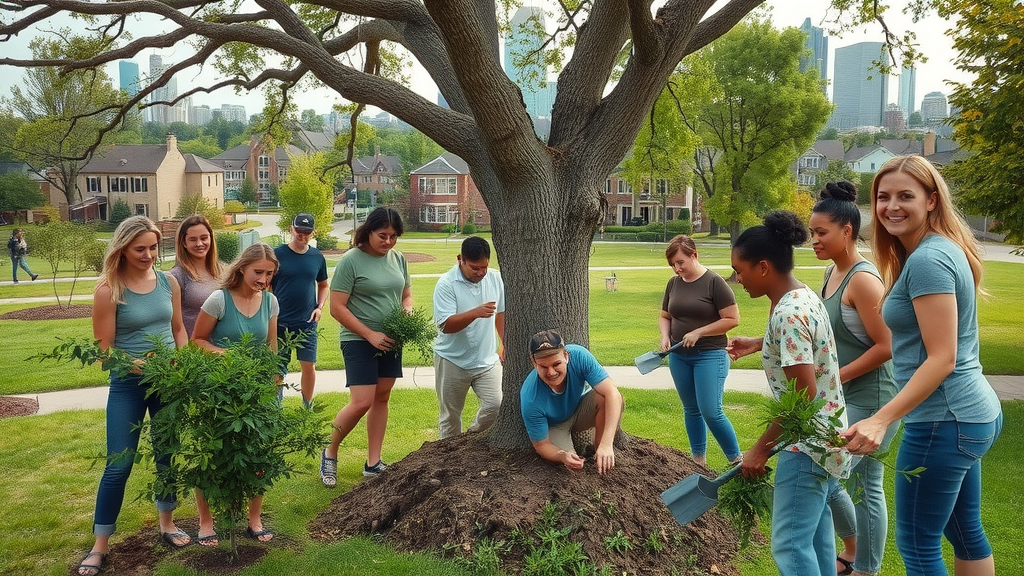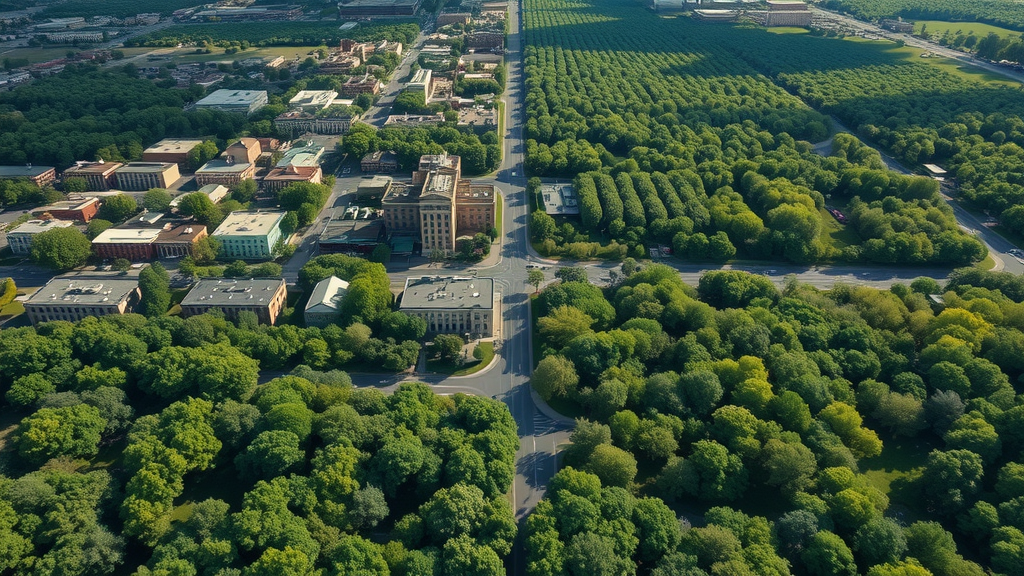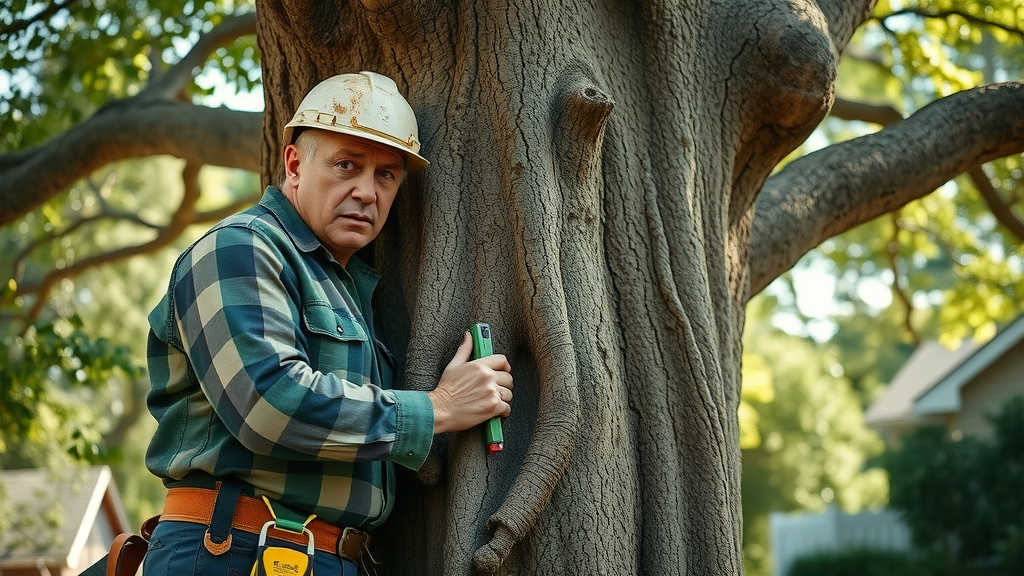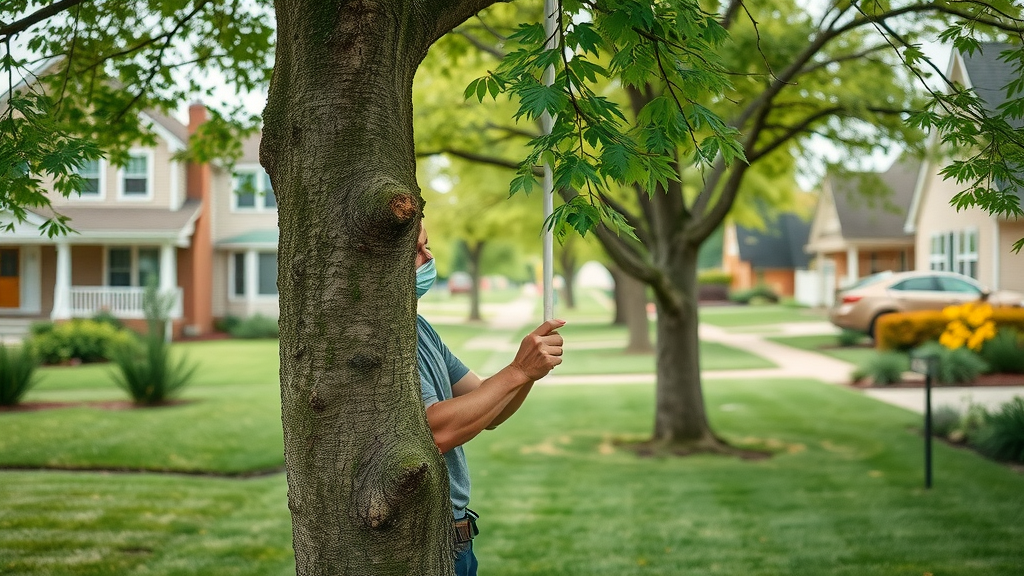Did you know Kansas City has lost more than 20% of its urban tree canopy cover in just three decades? The roots of our city’s identity stretch deep into the soil, connecting neighborhoods, parks, and vital green spaces. With every legacy city tree lost to urban growth, development, or neglect, a piece of our natural resource history and future environmental balance disappears. In this guide, you’ll learn how tree preservation Kansas City not only protects these living assets but also ensures that our urban forest thrives for generations to come.

Why Tree Preservation Kansas City Matters: Surprising Data on Urban Tree Canopy Loss
Kansas City’s beautiful boulevards and parks were once defined by expansive tree canopy —a cooling, sheltering patchwork woven throughout city and suburban neighborhoods. Yet, as the metro area has grown, Kansas City's tree canopy cover has steadily declined. This loss impacts not only the city's charm and character but also its ecosystem services, such as air purification, stormwater management, and wildlife habitat.
Most residents are shocked to learn that urban development, infrastructure projects, and even mismanaged tree service remove thousands of trees every year. With less than 18% canopy cover remaining in many districts, Kansas City risks falling below the recommended national average for urban forestry health. Our city council and local natural resource experts urge residents to embrace preservation and protection strategies to reverse this trend—before it’s too late.
Kansas City's Disappearing Tree Canopy Cover—A Closer Look
- Kansas City has lost over one-fifth of its historic tree canopy in the past 30 years.
- Open space and mature trees are most at risk in developing neighborhoods and along major transportation corridors.
- Climate protection gains from our urban forest are dwindling, raising local temperatures and increasing flooding risks in clay soil zones.
- Every mature city tree removed without a replacement plan impacts community health, wildlife, and property value.

What Residents Will Gain: The Value of Tree Preservation Kansas City for Urban Life
Effective tree preservation Kansas City plans yield long-lasting benefits for residents, local businesses, and future generations. Mature trees not only make neighborhoods picturesque but also counteract air pollution, sequester carbon, and promote well-being. Each initiative in tree preservation and protection enhances Kansas City's unique character and livability.
- Discover why mature trees are central to Kansas City’s local identity and ecosystem.
- Learn best practices for responsible tree care and preservation services.
- Understand local ordinances and how a professional tree plan can protect your property’s legacy trees.
Embracing professional preservation services ensures compliance with city regulations and aligns your efforts with the expertise of certified arborists and city foresters —safeguarding your investment and the city tree heritage at large.
Understanding Tree Preservation Kansas City: Concepts and Key Terminology
Tree preservation in Kansas City involves more than just hiring a tree service to trim limbs or remove debris. This process centers on long-term planning and knowledge of critical terms.
Defining City Tree, Tree Preservation, and Preservation Services
- City tree: A public or private tree within Kansas City’s municipal boundaries, often protected by special ordinances or managed by local authorities.
- Tree preservation: The proactive management and retention of trees, especially mature or significant specimens, in the face of development or decay.
- Preservation and protection: Integrated strategies—including regulatory, physical, and educational measures—that shield trees from unnecessary removal and ensure their vitality.
- Canopy cover: The area of ground shaded by trees, directly relating to the urban forest’s density and health.
Tree preservation emphasizes maintaining tree health and protecting root zones, especially compared to general tree care or removal services. An effective tree plan considers everything from soil quality and site plan design to ongoing monitoring for disease or pest activity.
Comprehensive Tree Care in Kansas City: Foundations of a Strong Tree Plan
Developing a strong tree plan provides the backbone for successful tree preservation Kansas City . Whether you’re a homeowner, business, or neighborhood association, aligning your landscape goals with city-wide preservation guidelines makes a measurable difference in local canopy cover and urban forest stability.
A strategic tree plan integrates careful mapping of existing trees, understanding site limitations such as clay soil, and working with natural resource professionals like certified arborists or city foresters. Regular tree risk assessments, soil health monitoring, and environmental benefits analysis all contribute to informed decision-making and sustainable tree care .
Building an Effective Tree Plan for Tree Preservation Kansas City
- Conduct a thorough inventory of legacy and city trees on your property, recording species, size, and health assessments.
- Identify development pressures, proximity to roads or sidewalks, and risks such as disease or invasive pests.
- Engage natural resource experts for site plan design, root zone protection, and recommendations on planting or pruning.
- Implement regular maintenance—including strategic watering, mulching, and pruning—to extend each mature tree’s lifespan.
- Review local ordinances and city council regulations to ensure your tree plan meets all preservation and protection requirements.
Collaboration with neighborhood open space committees, parks and recreation staff, and city forestry authorities can elevate your plan’s success and ripple benefits across broader Kansas City communities.

Mature Tree Preservation Kansas City: Techniques for Protection and Sustainability
Mature tree preservation is the bedrock of environmental stability in Kansas City. These giants absorb more carbon, offer superior shade, and serve as anchors for entire urban forest habitats. Their preservation requires a proactive approach to identify health issues, implement timely maintenance, and prevent unnecessary removal, even amid aggressive development activities.
Key factors influencing mature tree health include proper pruning, soil management—especially in problematic clay soil—and early intervention for disease or pest outbreaks. Enlisting specialists ensures your preservation efforts protect both the visible canopy and the crucial underground root zone.
Critical Tree Service and Maintenance for Mature Trees
- Pruning: Use industry best practices to remove weak, dead, or dangerous limbs while retaining structure and supporting lasting growth.
- Disease management: Regular inspections by certified arborists can identify warning signs of oak wilt, Emerald Ash Borer, or root rot before large-scale impacts occur.
- Soil health: Aerate dense or compacted clay soil, apply organic mulch within the root zone, and test for nutrient deficiencies to support robust canopy cover.
Successful mature tree care in Kansas City depends on understanding the city’s unique climate, common urban forest stresses, and leveraging new techniques developed by the International Society of Arboriculture for maximum preservation benefits.
KANSAS CITY Regulations and Urban Forestry Ordinances on Tree Preservation
| Ordinance/Law | Purpose | Homeowner/Business Responsibilities |
|---|---|---|
| Municipal Code Chapter 48 – Trees & Vegetation | Regulates removal and replacement of city trees; requires permits for protected trees | Apply for removal permits; follow site plan requirements; maintain open space |
| Tree Protection Standards—Development Sites | Mandates preservation plans and canopy cover goals for new developments | Submit a protection plan; install fencing around root zones; replace lost canopy |
| Heritage & Legacy Tree Protections | Provides extra protection for mature, historical, or rare city trees | Official documentation; restricted trimming/removal; ongoing maintenance |
| Parks and Recreation Tree Maintenance Program | Guides care of trees in public parks and boulevards | Report hazards; participate in volunteer planting/maintenance events |
Professional Tree Preservation Kansas City: Choosing a Trusted Tree Service
Entrusting your legacy trees to a professional tree preservation service ensures their care meets the highest standards and legal requirements. Selecting the right provider can be the difference between a healthy, thriving tree and one facing unnecessary removal.
Look for companies and arborists who are respected by the International Society of Arboriculture or have city-specific certifications. These professionals understand Kansas City’s ordinances, soil challenges, and the nuances of both routine care and complex preservation and protection situations.
What to Look For in a Preservation Service Provider
- Essential credentials: ISA-Certified Arborist, proof of insurance, and verifiable training in tree preservation and protection.
- Services offered: Comprehensive assessments, risk mitigation plans, disease and pest management, soil and root zone care, legal compliance consultation, and ongoing maintenance agreements.
- Expertise: Track record with mature city trees, strong references in Kansas City's neighborhoods, and municipal contract experience.
Before hiring, vet providers by checking their licenses with the city forester and reviewing feedback from neighbors or local business leaders whose trees have thrived thanks to skillful preservation services.
"Urban forests are our most valuable — and vulnerable — natural resources in Kansas City. Every preserved tree adds to our city’s legacy." – Local Arborist
Case Study: A Successful Tree Preservation Kansas City Project
To understand the tangible impact of expert tree preservation , consider a recent project in Overland Park—a neighborhood home to several 70-year-old oaks threatened by a major road expansion. By coordinating with city council, a certified arborist, and a dedicated landscape architect, residents created a comprehensive preservation and protection plan.
Legacy Tree Protection in Action
- Assessment: Tree risk evaluated using advanced diagnostic tools. Soil and root zone health tested, and a site plan reviewed to avoid impacting the mature tree roots during construction.
- Mitigation: Fencing and signage installed to prevent heavy equipment from entering root zones; temporary irrigation used to combat drought stress.
- Ongoing Maintenance: Regular tree care by professional tree services, scheduled inspections, and neighbor engagement to ensure compliance and long-term health.
This success story demonstrates that when communities invest in proactive strategies and expert guidance, Kansas City's urban forest and city trees can persevere, providing shade, beauty, and eco-services for generations.

Supporting Kansas City's Tree Canopy for Future Generations
- The ecological, economic, and social impacts of a healthy tree canopy span cleaner air, boosted property values, reduced flood risks, and cohesive community identity.
- Families and local businesses benefit from energy savings, climate protection, and safer, more inviting neighborhoods when they champion tree preservation Kansas City efforts.
These investments in canopy cover resilience are among the most impactful climate protection strategies cities can pursue. The urban forest you help preserve today ensures a more livable, resilient Kansas City tomorrow.
How Tree Planting Supports Long-Term Urban Tree Preservation
- Best locations for new city trees: Prioritize large open spaces, parks, neighborhood greenways, and underserved residential zones to maximize benefits and fill gaps in current canopy cover.
- Selecting native species: Choose trees suited to the local climate, soil (including challenging clay soil), and pest resistance. Native species support local wildlife and stabilize the urban forest.
- Ongoing care: Water and mulch each sapling regularly, protect young roots from compaction, and schedule professional check-ups to ensure successful establishment and longevity.

People Also Ask: FAQs about Tree Preservation Kansas City
Why is tree preservation important in Kansas City?
- Answer: Tree preservation in Kansas City is crucial for sustaining the region’s environmental health, managing urban heat, improving air quality, supporting wildlife, and protecting the character of local neighborhoods.
Are there specific city ordinances on tree preservation Kansas City homeowners should know?
- Answer: Yes, Kansas City enforces multiple ordinances regulating city tree care, removal permits, and preservation of significant or mature trees during development projects.
What professional services are available for tree preservation Kansas City?
- Answer: Certified arborists and tree preservation specialists offer risk assessment, maintenance, soil care, disease management, and legal compliance guidance.
How can I find professional tree preservation services near me in Kansas City?
- Answer: Look for companies with ISA-certified arborists, verifiable local experience, and a commitment to urban canopy preservation and protection.
Expert Checks: When to Call for a Professional Tree Preservation Kansas City Assessment
- Visible dieback in the canopy, premature leaf drop, fungi or mushrooms at the base, or cracks in main branches
- Noticeable soil compaction, pooling water, or construction activity near tree root zones
- Storm damage, hazardous limbs, extensive pest infestations, or large wounds
- Consult a professional tree service before considering emergency removal—early expert intervention saves most legacy trees.

Recommended Steps for Homeowners: DIY Tree Preservation Kansas City Tips
- Inspect trees for disease and hazards regularly—look for discolored leaves, deadwood, or visible pests.
- Water and mulch as needed, especially in drought. Keep mulch at least three inches away from the trunk.
- Follow correct pruning practices—remove broken or crossing branches, and never “top” a mature tree.
- Record significant trees and incorporate them into your site plan for future landscaping or development projects.
Short Video: How Professional Tree Service Supports Tree Preservation Kansas City
Video: Kansas City’s Urban Tree Canopy—Spotlight on Preservation Success Stories
Checklist: Building a Community Tree Plan for Tree Preservation Kansas City
- Partner with local authorities and neighborhood associations to coordinate efforts and share resources.
- Advocate for city tree protection policies at public meetings and through direct engagement with city council.
- Participate in planting and maintenance initiatives for both public and private green spaces—strengthening community ties and urban canopy cover.
Further Resources: How to Get Involved with Tree Preservation Kansas City
- Connect with your local city forestry office for permits, advice, and current preservation ordinances.
- Volunteer for community tree planting projects sponsored by parks and recreation or regional nonprofits.
- Attend educational workshops or access online guides about Kansas City-specific tree care and soil management.
Frequently Asked Questions about Tree Preservation Kansas City
- What makes Kansas City’s tree preservation efforts unique?
- How do I apply for a tree removal permit?
- What are the penalties for violating city tree ordinances?
Summary and Next Steps: Protecting Kansas City’s Legacy with Tree Preservation
- Adopt tree preservation strategies used by experts.
- Every resident can support the urban forest and increase canopy cover.
- For immediate guidance or urgent concerns, connect with a certified professional right away.
For a Professional Consultation – Call Paul Weaver Arborist 913-915-4165 for Tree Preservation Kansas City
Ready to make your mark on Kansas City’s natural legacy? Contact Paul Weaver, ISA-Certified Arborist , at 913-915-4165 for expert tree preservation Kansas City solutions.
 Add Row
Add Row  Add
Add 




Write A Comment